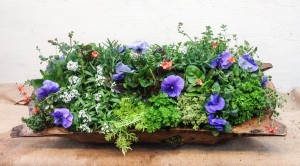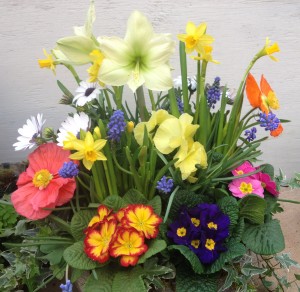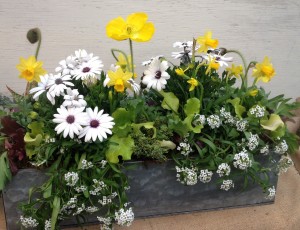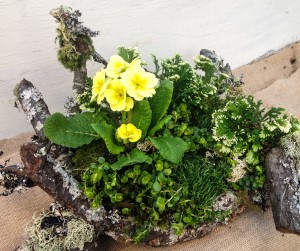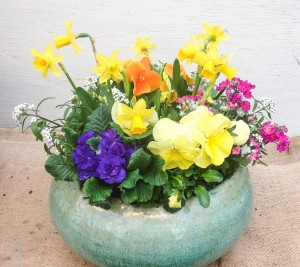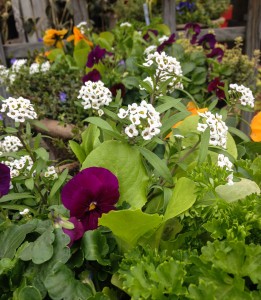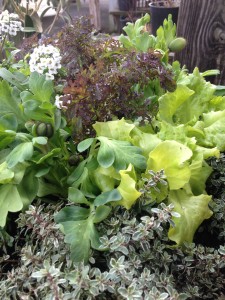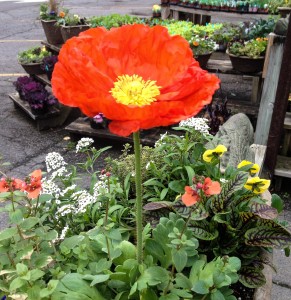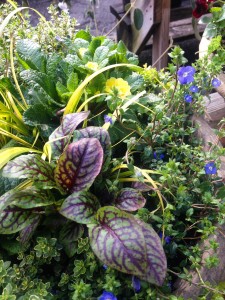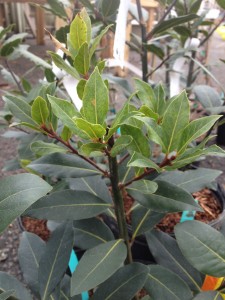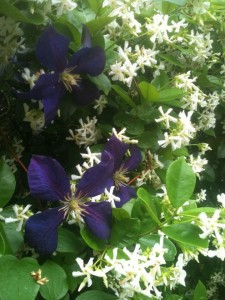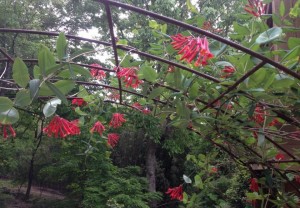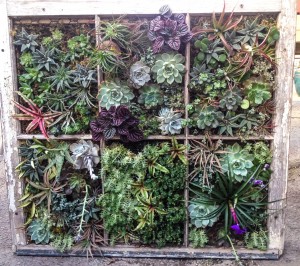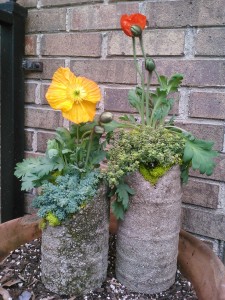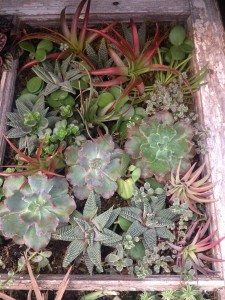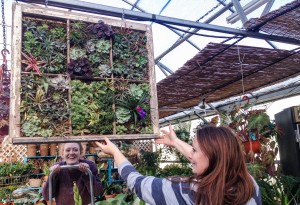
succulents in the greenhouse…
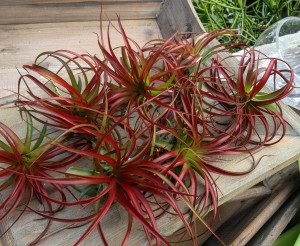
air plants…
With the spring planting season approaching, the nursery will be a plant lovers dream, filled with the best of everything we can find. These include fragrant, ornamental, and edible herbs, including the popular oregano ‘Kent’s Beauty’, sun and shade loving perennials for your garden, bright, flowering annuals for pots and planting beds, and shrubs expressly selected for their ornamental qualities and durability in southern gardens.
Another grouping of plants we have all year around are succulents, and they are so beautiful arranged in containers for the summer or as a combination planting in the home all year around. Some shown here also incorporate tillandsias, or air plants because their care and culture is so similar.

living wreath…
The living wreath shown here that Molly planted was a huge hit on our Facebook page, and for good reason. Just look at all the interesting textures and colors used, including echeverias, cryptanthus, air plants and even a tiny phalaenopsis orchid! This post on creating a living wreath give you some tips on how to make your own masterpiece. To see yet another that Jamie made, take a look HERE.
 Because succulents, air plants and even bromeliads (another great companion) come in so many different shapes, colors and sizes, it’s fun to come up with endless combinations. Here are more that we’ve created in the past few months.
Because succulents, air plants and even bromeliads (another great companion) come in so many different shapes, colors and sizes, it’s fun to come up with endless combinations. Here are more that we’ve created in the past few months.
In this long, narrow planter Lauren used a number of different plants including succulent echevarias, sedums, haworthias, and a pretty pink aloe. Meandering through this combination are pilea ‘Aquamarine.’
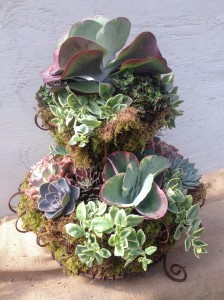
this will get large!
This two tier planting is going to get quite large! Flapjack kalanchoes share the space with a trailing succulent-like plant called dorotheanthus which will have charming little red flowers as the weather gets hotter. It’s also quite cold tolerant, though not completely hardy for us here. This container would be best moved in for the winter.
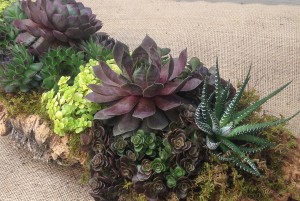
We’ve used cork bark planters to great effect in the past, and here Molly planted one with some really beautiful hen and chicks, sempervivum sp., and a couple of hardy sedums. This planting could be kept outdoors through the winter with the exception of the tiny aloes on each end, which can be repotted and moved inside during the colder months. The entire planting could also be moved into a sunny room for the winter.
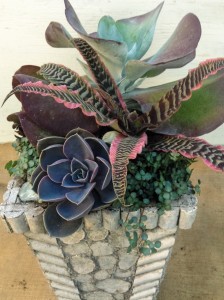
one of two…
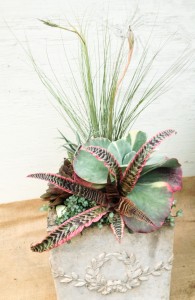
air plants add height until the flapjack kalanchoe gets larger…
The two pretty white pots shown here work together (There’s actually a third as well.) I used a tall tillandsia to add some height to this planting until the flapjack kalanchoe attained some size. The cryptanthus adds some color at the front and the pilea will contribute delicate trailing leaves to this composition. In the second pot I added an echevaria to the planting, keeping the pinky color scheme going.
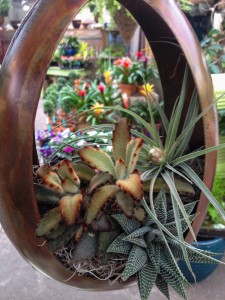
Be careful not to overwater if a container doesn’t drain…
Succulents can be planted in anything! This copper planter does not have drainage though, so the plantings need very careful attention to be sure they’re not overwatered – always be mindful of what kind of containers you’re using. Those that drain are always best. I have to confess I just really liked how this looked anyway! And, it’s been growing quite happily in the greenhouse since February.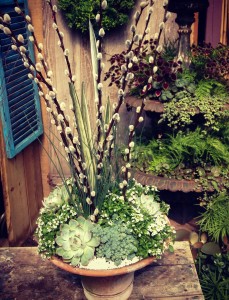
Succulents can be used as accents. too. Here a container is home to a tall sanseveria and pussy willow stems with sweet allysum tucked between for it’s dainty white blooms.
Finally, if you’re designing a container with succulents (Or anything!) remember the container you’re placing them in is part of the design as well. This little log shaped planter is brown in color but tinged with a touch of pink. I liked how the cryptanthus on the left picked up on that but contrasted with the other plants chosen to offset it in color and weight.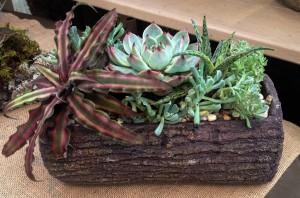
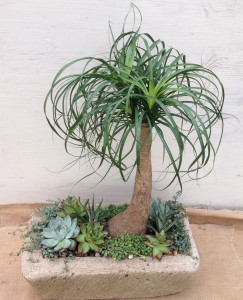 So, with warmer weather right around the corner, grab a pot, stop in , and find some succulents and air plants of your own to plant up – you can’t go wrong – promise!
So, with warmer weather right around the corner, grab a pot, stop in , and find some succulents and air plants of your own to plant up – you can’t go wrong – promise!


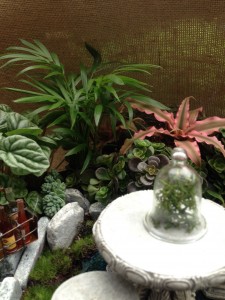
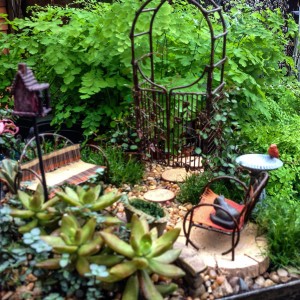
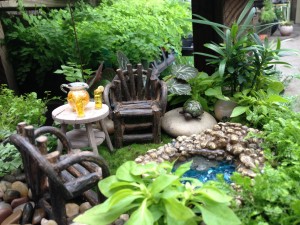
 What does all this have to do with miniature gardens, you ask? Well, these tiny gardens have been very popular the past number of years, and the garden club organizers decided it would be a fun thing to have on some of the tables for one of their meetings. And they turned to Oak Street Garden Shop for help.
What does all this have to do with miniature gardens, you ask? Well, these tiny gardens have been very popular the past number of years, and the garden club organizers decided it would be a fun thing to have on some of the tables for one of their meetings. And they turned to Oak Street Garden Shop for help.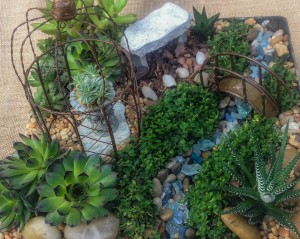 Because these take a great deal of time to make, I finally gave up on waiting for new miniature garden accessories I’d ordered since my deadline to have them completed was looming…but I still had plenty of fun things to play with. If you’ve ever made one of these
Because these take a great deal of time to make, I finally gave up on waiting for new miniature garden accessories I’d ordered since my deadline to have them completed was looming…but I still had plenty of fun things to play with. If you’ve ever made one of these 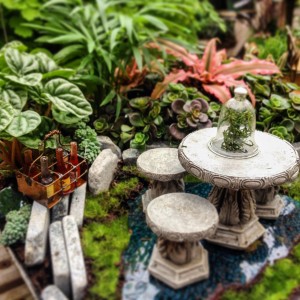 Tiny pots of ordinary houseplants also work in these gardens. Little parlor palms, ferns, polka dot plants and baby podocarpus make good companions, and selaginella is a pretty groundcover.
Tiny pots of ordinary houseplants also work in these gardens. Little parlor palms, ferns, polka dot plants and baby podocarpus make good companions, and selaginella is a pretty groundcover.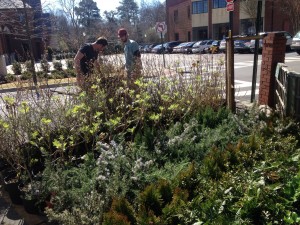
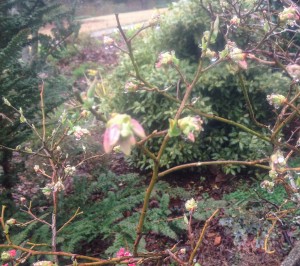
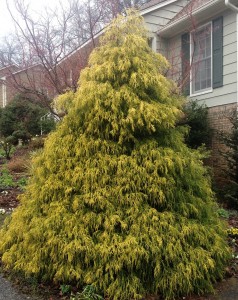
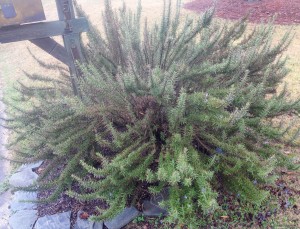
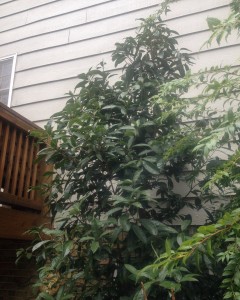

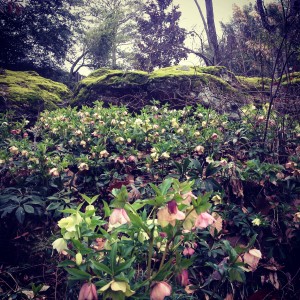

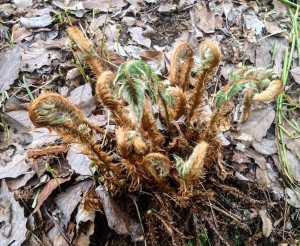
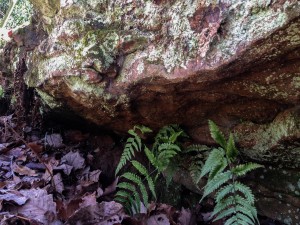
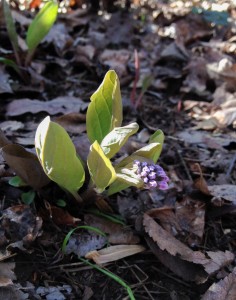


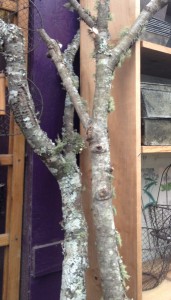
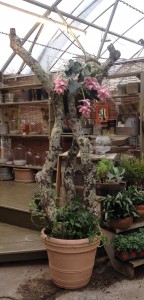 The key components are some really large limbs, swiss cheese philos that were too rootbound to remain in their plastic pots, air plants, bromeliads, and lots of helping hands!
The key components are some really large limbs, swiss cheese philos that were too rootbound to remain in their plastic pots, air plants, bromeliads, and lots of helping hands!
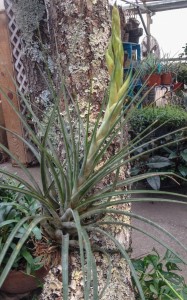
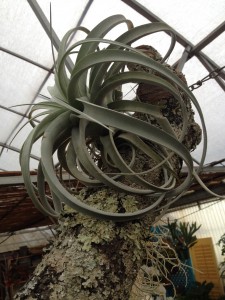 While Pinkie planted the medinilla, Jamie and I played with the positioning and wiring of the larger air plants and small bromeliad. It was coming together!
While Pinkie planted the medinilla, Jamie and I played with the positioning and wiring of the larger air plants and small bromeliad. It was coming together!
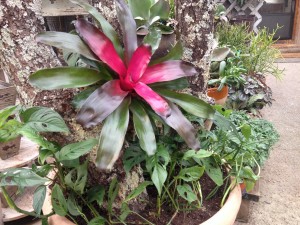 Finally, a bright Neoregelia bromeliad with a moss wrapped pot was nestled in at the botttom for a pop of color at the base. A bit of spanish moss hanging delicately from the top limbs completed our project.
Finally, a bright Neoregelia bromeliad with a moss wrapped pot was nestled in at the botttom for a pop of color at the base. A bit of spanish moss hanging delicately from the top limbs completed our project.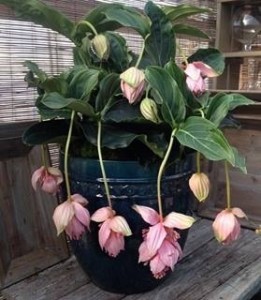 A stop you in your tracks plant, this one is very new to everyone, including us. Medilla magnifica’s origin is in the mountains of the Phillipines…and this is just one of 400 species! It’s an epiphyte in its native land, growing high in trees. What a sight that must be! Evidently the late king Boudewijn of Belgium was enamored of them, as well, growing them in his royal conservatories and using them on Belgian currency.
A stop you in your tracks plant, this one is very new to everyone, including us. Medilla magnifica’s origin is in the mountains of the Phillipines…and this is just one of 400 species! It’s an epiphyte in its native land, growing high in trees. What a sight that must be! Evidently the late king Boudewijn of Belgium was enamored of them, as well, growing them in his royal conservatories and using them on Belgian currency.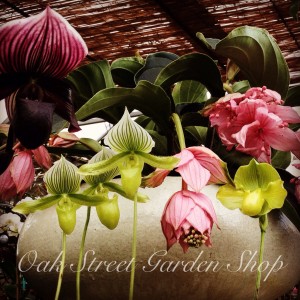

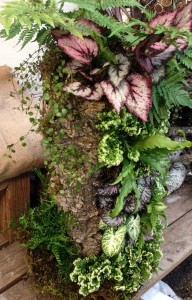 These pieces can be used either horizontally, planting along the top, or vertically, like I’ve designed this one, positioning the plants up the planter. Since it could be unsteady if it didn’t have something to stabilize it at the base, I placed it in a pulp planter that I’d covered with a layer of sheet moss. A plastic saucer underneath will protect the floor during its time indoors, then it can be used without the saucer out in the garden or on a patio, porch or other spot that has some shade.
These pieces can be used either horizontally, planting along the top, or vertically, like I’ve designed this one, positioning the plants up the planter. Since it could be unsteady if it didn’t have something to stabilize it at the base, I placed it in a pulp planter that I’d covered with a layer of sheet moss. A plastic saucer underneath will protect the floor during its time indoors, then it can be used without the saucer out in the garden or on a patio, porch or other spot that has some shade.
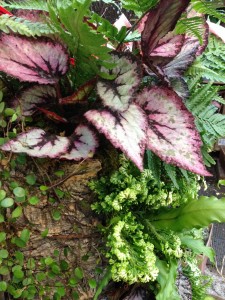 This planting has a variety of houseplants, including nephthytis, used for its lighter green and white foliage, rex begonias for a bit of color, tooth brake ferns and a bird’s nest fern, a new selaginella with white tips called ‘Frosty’, and a large autumn fern in the top with angel vine spilling over the edge with one last, large rex begonia.
This planting has a variety of houseplants, including nephthytis, used for its lighter green and white foliage, rex begonias for a bit of color, tooth brake ferns and a bird’s nest fern, a new selaginella with white tips called ‘Frosty’, and a large autumn fern in the top with angel vine spilling over the edge with one last, large rex begonia.